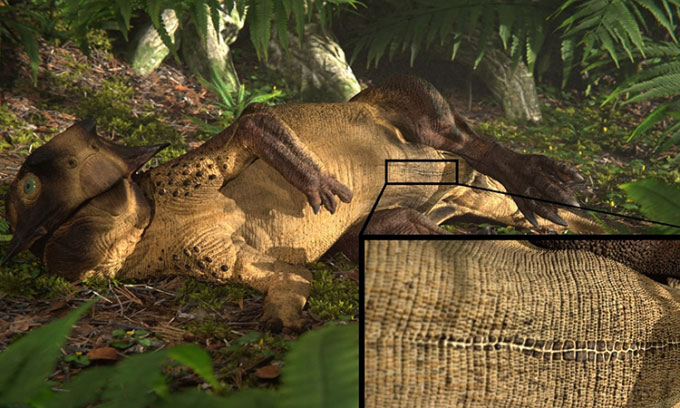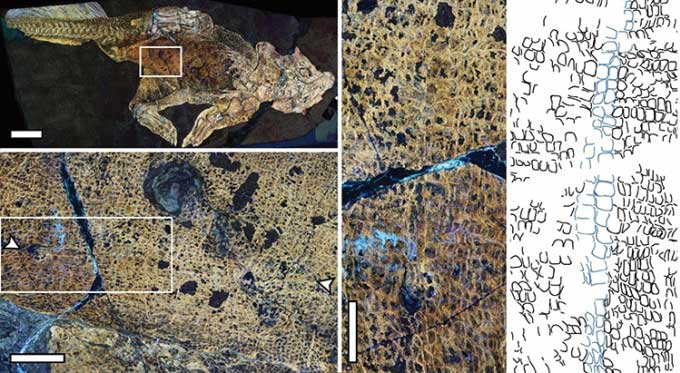Well-Preserved Psittacosaurus Dinosaur Fossil Reveals Long Navel Scar Similar to Modern Crocodiles.

3D reconstruction of Psittacosaurus dinosaur lying on the ground, showcasing a long navel scar. (Image: Jagged Fang Designs)
Scientists have discovered the oldest navel ever recorded in a Psittacosaurus (parrot-faced dinosaur) fossil that lived approximately 130 million years ago in China. The new study was published in the journal BMC Biology on June 7. The scar does not originate from an umbilical cord as in mammals, but from the yolk sac of this egg-laying creature.
Today, many species of snakes and birds lose their navel scar within days or weeks after hatching. Some other creatures, such as adult crocodiles, retain their navel scar for life. The navel scar of the Psittacosaurus resembles that of crocodiles more closely. It lasted at least until the dinosaur reached sexual maturity, and possibly for a long time thereafter.
This is the first example of a navel in a non-avian dinosaur that existed before the Cenozoic Era (which began about 66 million years ago and continues to the present). This new finding does not imply that all terrestrial dinosaurs had long-lasting navel scars, but the possibility remains.

Laser image of the navel scar of Psittacosaurus and close-up of the scales. (Image: BMC Biology/Phil Bell and colleagues)
“This Psittacosaurus specimen is probably the most important fossil we have for studying dinosaur skin. It continues to surprise us with new discoveries thanks to new technology, such as laser imaging,” said paleontologist Phil Bell from the University of New England, Australia.
The Psittacosaurus fossil, designated SMF R 4970, was found in China in 2002. It is exceptionally well-preserved, retaining individual scales, a tuft of long tail feathers, and the first known cloacal opening discovered in a non-avian dinosaur. The dinosaur fossilized in a supine position, exposing every detail to scientists.
Using laser imaging techniques, researchers identified changes in skin and scales at the dinosaur’s navel, indicating where the yolk sac was absorbed by the hatchling. Similar to the umbilical cord, the yolk sac provides oxygen and nutrients to the developing embryo inside the egg. Another structure known as the allantois connects to the embryo to collect waste inside the egg. Before an animal hatches, these connections are sealed, leaving behind a long scar.
Researchers have long hypothesized that egg-laying dinosaurs would have a scar like this, but this is the first evidence to support that. Soft tissue fossils in dinosaurs are extremely rare, and SMF R 4970 provides an unprecedented view of the scar resembling a thin column with paired scales fused together on the belly.
The normal size and smooth edges of the scales indicate that the scar was not caused by injury or disease. Instead, the similarity to crocodiles suggests that this is a navel.
“We identified special scales surrounding a long scar in the Psittacosaurus specimen, similar to some modern lizards and crocodiles. We refer to this type of scar as a navel, which is smaller in humans. This specimen is the first dinosaur fossil to retain a navel due to its exceptional state of preservation,” said paleontologist Michael Pittman from the Chinese University of Hong Kong.


















































